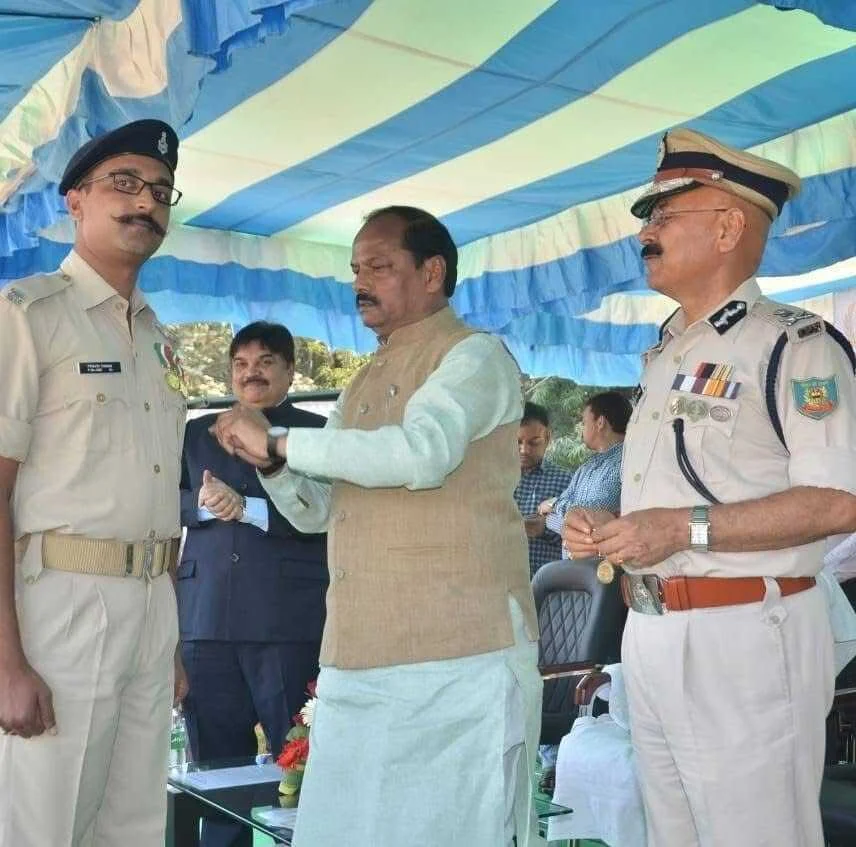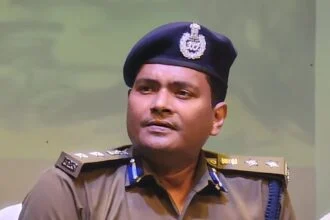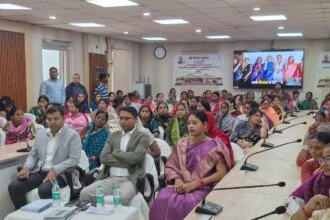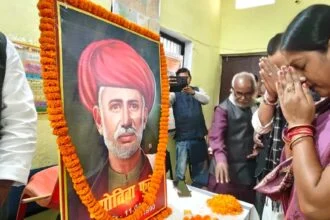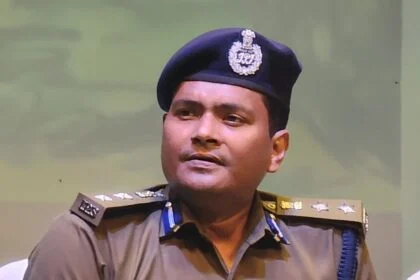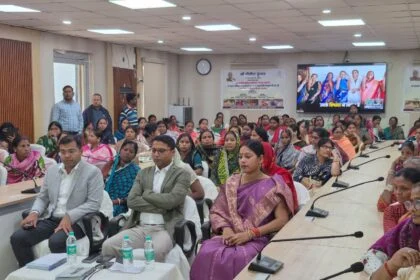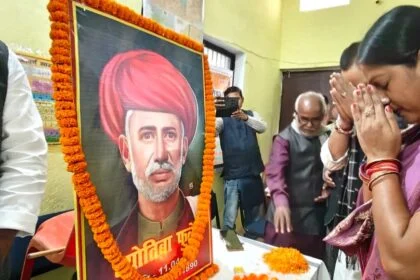Ranchi:In the heart of Jharkhand’s rugged hinterland, where the line between survival and death often blurs, one man’s journey from a rural newsroom to the battlefield against left-wing extremism stands as a testament to courage, grit, and unwavering service.
Pravin Tiwary once chronicled village stories from Gumla as a young journalist, his pen capturing the struggles of a land torn between hope and fear. But destiny had a different script for him — one that would see him exchange his reporter’s notepad for the Khaki uniform and step directly into the fire he once reported on.
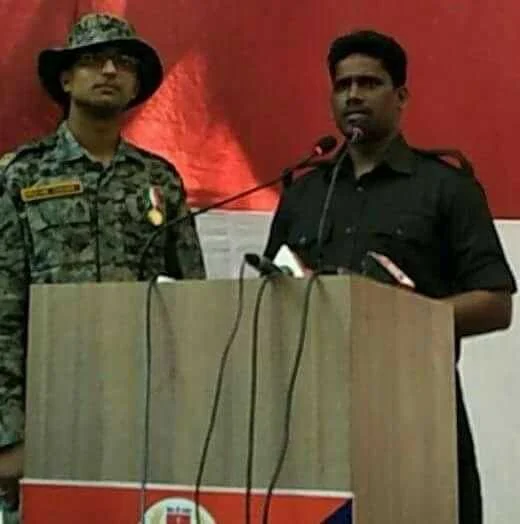
In 2010, Tiwary joined the Jharkhand Homeguard service, a temporary role that few would associate with frontline glory. But for Tiwary, service was never about status — it was about impact. Even in this modest position, he threw himself into the thick of anti-Naxal operations, guiding state and central forces into the labyrinthine forests and deadly hideouts of Maoist insurgents. Based on his invaluable intelligence inputs, security forces busted several top Maoists’ hideouts, nabbed scores of revels or killed them before confiscated their arms and ammunitions.
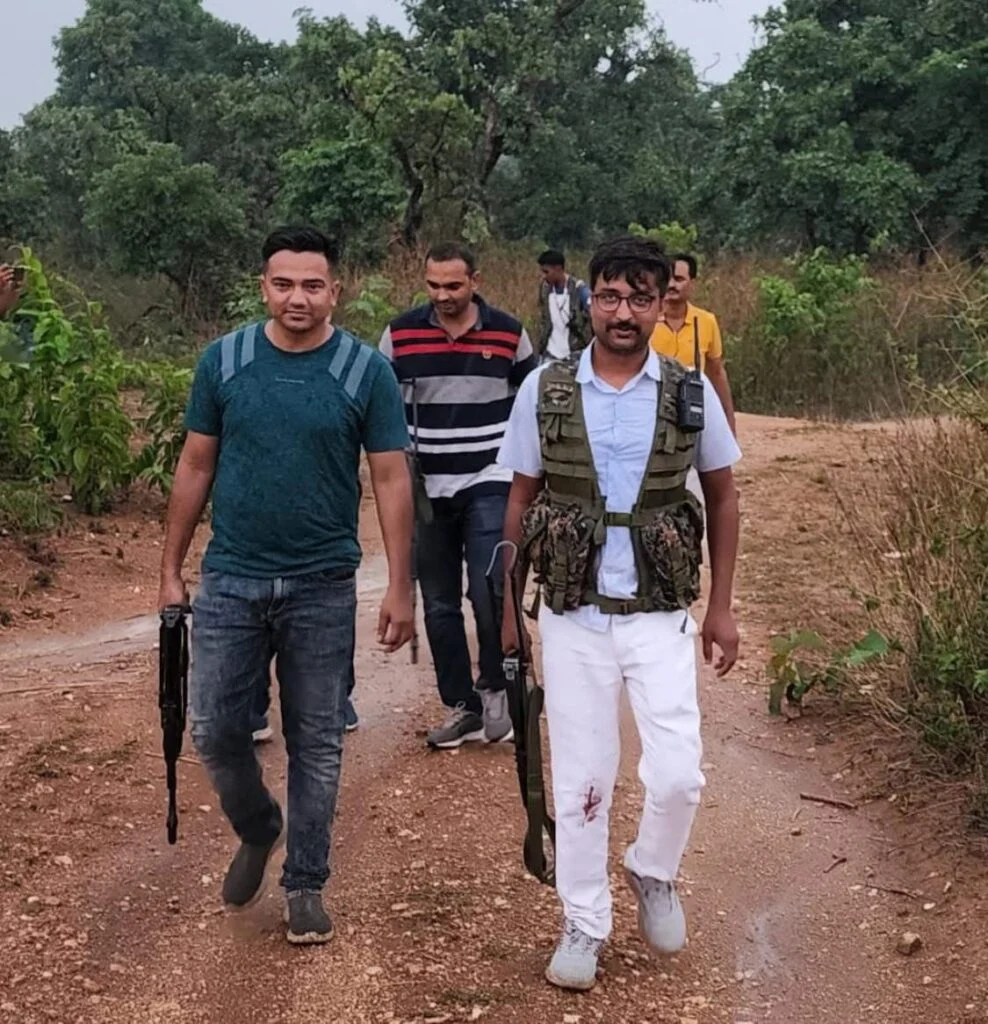
Frustrated Maoists of the area turned his biggeat enemy and made several attempts on his life but as luck would have it, each time Tiwary escaped unhurt.
Fed up, the red rebels then turned the ante against his family members. In one such late night attack, when Tiwary was escorting forces towards one of the Maoists hideouts, the rebels stormed his house and killed his uncle, Shailesh Tiwary. Unnerved and with his family’s unwavering support, Tiwary didn’t give up and continued the fight against the rebels.
His commitment didn’t go unnoticed.
By 2016, the Jharkhand Police formally inducted him into their ranks, recognizing in him a rare combination of instinct, bravery, and leadership. Transferred to Ranchi, Tiwary’s battlefield expanded — and so did his legend.
He didn’t just participate in operations; he led them from the front. His sharp intelligence, honed from years of reporting and grassroots engagement, helped police forces dismantle key Maoist networks. He was instrumental in orchestrating the surrender of Kundan Pahan, once the most feared Maoist zonal commander whose very name spread terror across Jharkhand’s villages. Tiwary also spearheaded the daring capture of Prashant Lakra, a notorious rebel commander with a bounty of Rs. 15 lakh on his head.
He recalled how a motley group of policemen- 16 in all- came face to face with a fully armed Maoist squad, almost double in strength. “We didn’t fear a bit at all. Instead, we gave them a hot chase and shot down one of their members. Petrified, the squad members began running helter-skelter and in the melee, we managed to nab the zonal commander,” said Tiwary with a beam of confidence writ large in his face.
All 16 barve hearts in the team were presented the CM Bravery Award. Their names were also sent for President’s Medal for Gallantry , but it is yet to come to him.
Similarly, two years back, in the backyards of capital city Ranchi in Nagri police station area, Tiwary along with three other jawans of the Ranchi SSP’s quick response team shot down top Maoist commander, Punai Oraon. He earned several accolades from his top bosses. Names of the four member team led by Tiwary were recommended for President’s Medal for Gallantry. While three of them got the medal last year, Tiwary’s name was struck down for reasons he still doesn’t know.
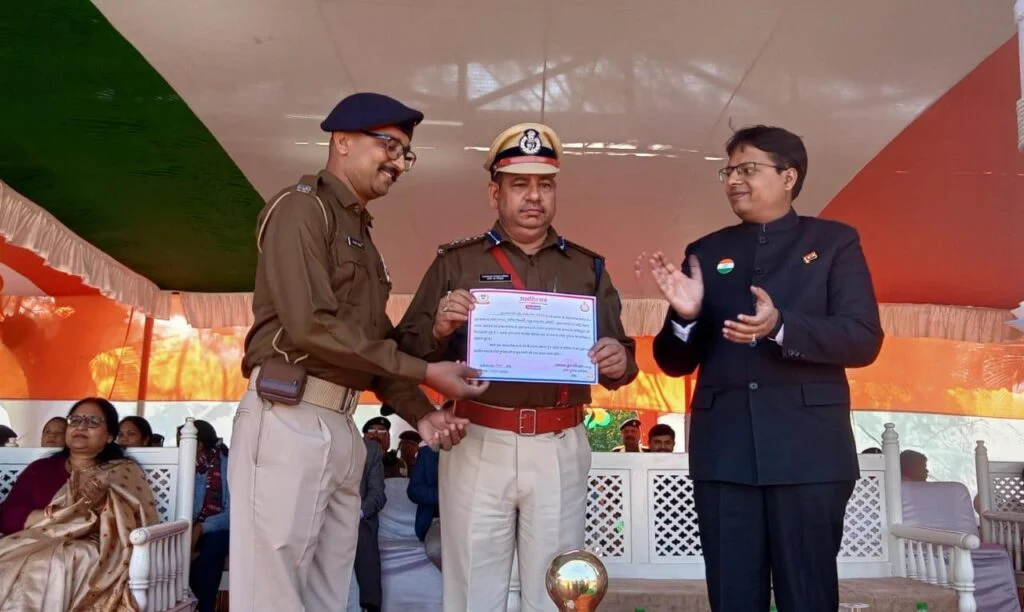
Over the years, Tiwary has led the police into more than 250 successful anti-Naxal operations — an astonishing number that speaks to his relentless pursuit of peace and justice. But his battle hasn’t been confined to guns and guerilla warfare. Tiwary also took the fight to the economic lifelines of extremism, playing a pivotal role in curbing the cultivation and smuggling of narcotic drugs from the rural belts — a revenue stream that often fueled the insurgency. His cell number appears in the Jharkhand Police Helpline site for information against any kind of drugs and narcotics.
The impact of his work has been profound. Villages once trapped in the shadow of fear are finding their way back to normalcy. Top police brass have repeatedly praised his contributions, and twice, the Chief Minister’s Bravery Award has been pinned onto his chest — a symbol of the state’s gratitude.
Today, Pravin Tiwary’s name is enough to send ripples of fear through the ranks of Maoist remnants and criminal gangs alike. Yet, for the man himself, the mission remains simple and deeply personal — to serve the land he once wrote about, now not with words, but with action.
In an era that often blurs the lines between heroism and fame, Pravin Tiwary stands tall as a silent sentinel — a reminder that true valor lies not in seeking glory, but in answering a higher call
Quick Facts About Pravin Tiwary
- From Journalist to Policeman
Before donning the Khaki, Tiwary began his career as a rural reporter in Gumla, Jharkhand, covering the challenges faced by remote villages. - Homeguard Days
In 2010, he joined the Jharkhand Homeguard service — a temporary assignment where he first showcased his natural instincts for field operations against Naxals. - Architect of Major Surrenders
Tiwary was instrumental in the surrender of Kundan Pahan, one of Jharkhand’s most dreaded Maoist commanders. - Over 250 Operations Led
With over 250 anti-Naxal operations under his leadership, Tiwary has been crucial in crippling Maoist networks across the state. - Decorated Twice with Bravery Awards
For his extraordinary valor, he has been honored twice with the Chief Minister’s Bravery Award, along with numerous letters of appreciation from top officials.



